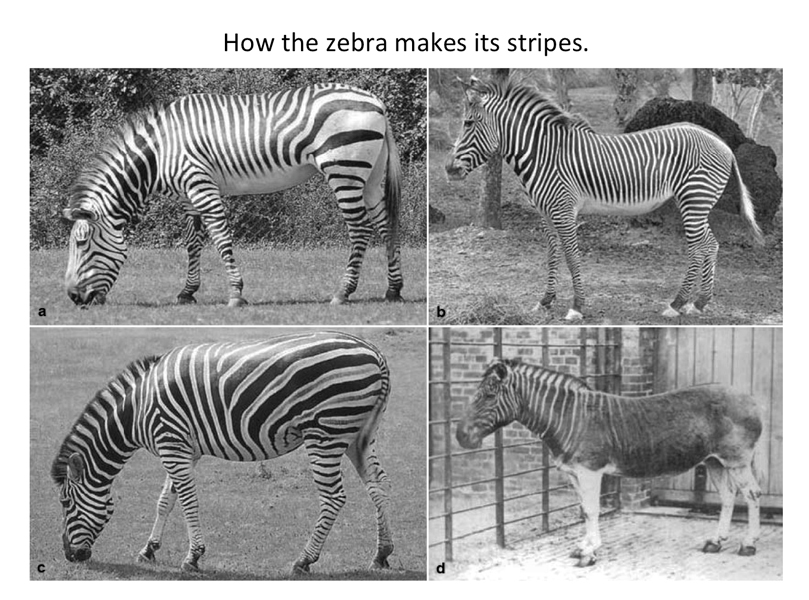| Zebras appear to develop via the same cellular rules as angelfish. The new stripes that arise between the old ones as angelfish grow are thin at first. This disparity is expected based on Turing's model. It is therefore of interest that similarly faint intercalary stripes are also seen in Burchell's (plains) zebra (c). Evidently, the time window during which patterning occurs in Equus burchelli is a long enough span to permit a second albeit partial round of stripe initiation, whereas the available time is so short in other zebras that only a single round can occur. There are three extant species of zebra: (a) the mountain zebra, Equus zebra; (b) Grevy's zebra, E. grevyi; and (c) the plains zebra, E. burchelli. The quagga (d) was a subspecies of E. burchelli until the breed went extinct in 1883; the one here was photographed at the London Zoo in 1870. Note the various striping idiosyncrasies: (1) the pin stripes of Grevy's zebra (b) imply a later onset (heterochrony) of the patterning mechanism; (2) the shadow (incipient?) stripes of the plains zebra (c) suggest a patterning period long enough for more than one round of stripe initiation; and (3) the sergeant's chevron or 'triradius' atop all four legs in Grevy's zebra (b) and atop the forelegs of mountain and plains zebras (a, c) indicates clashing tissue polarities. One riddle that has so far defied explanation concerns horizontal stripes on the rump. These stripes extend far forward in E. burchelli (c), less so in E. zebra (a), not at all in E. grevyi (b), and they vanish in the quagga (d). Photos are from foter.com: Arthur Chapman (a), Dirk-z20 (b), FurLined (c), and Recuerdos de Pandora (d). |
|
leopard | cheetah compared with butterfly | anglefish | zebra | mouse cloud leopard | giraffe | ant | beetle | treehopper stalk-eyed fly | ladybird | snake | The Interactive Fly resides on the web server of the Society for Developmental Biology. |


